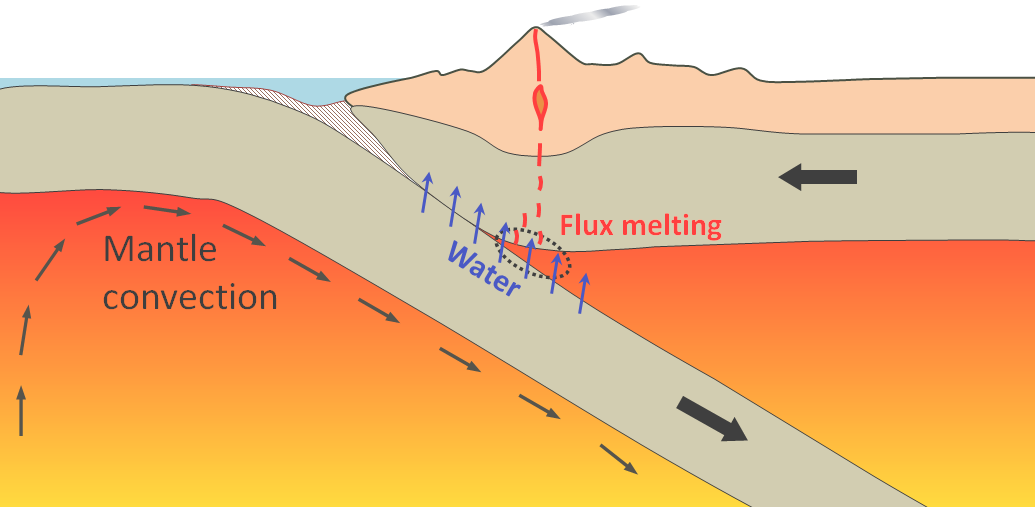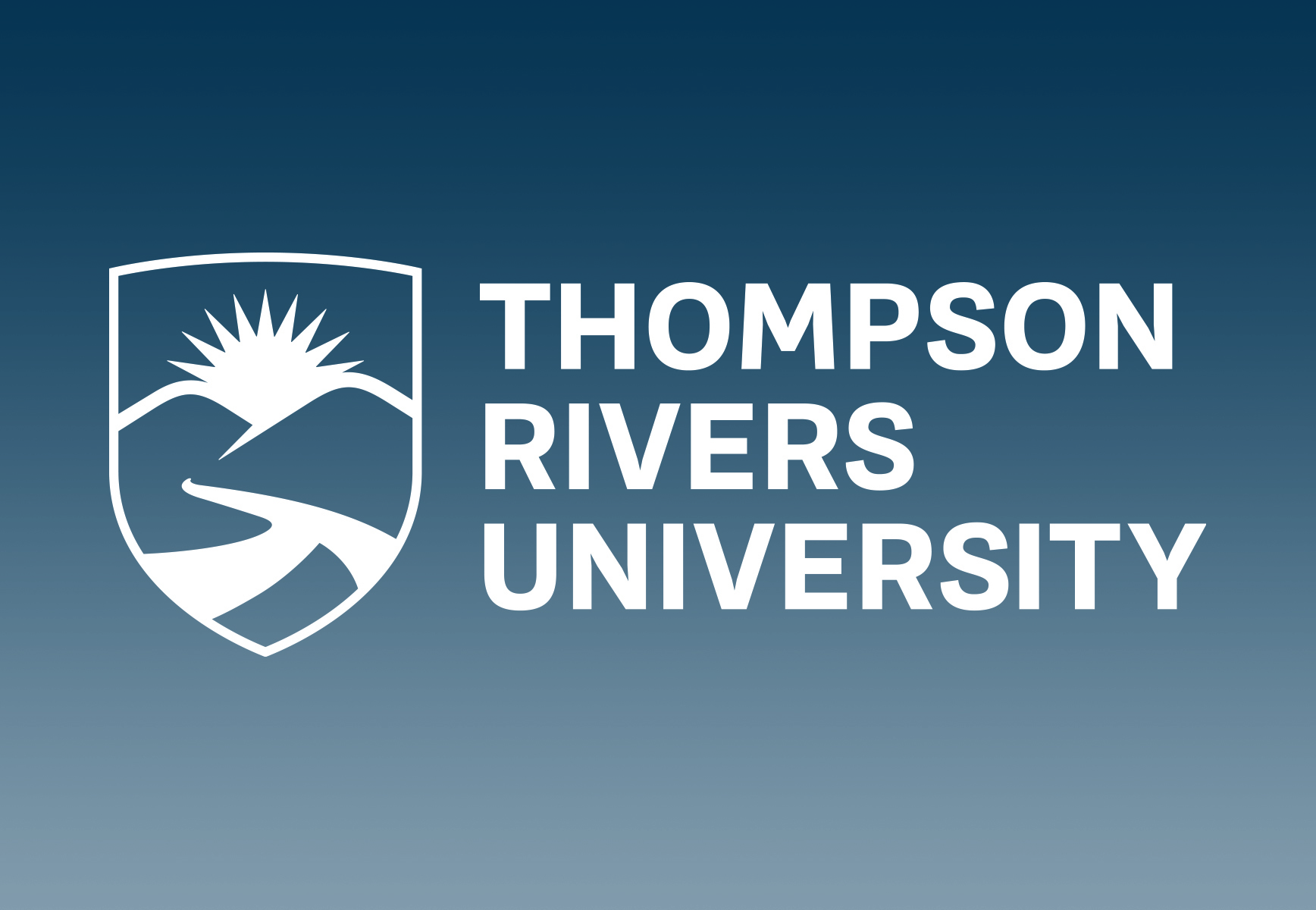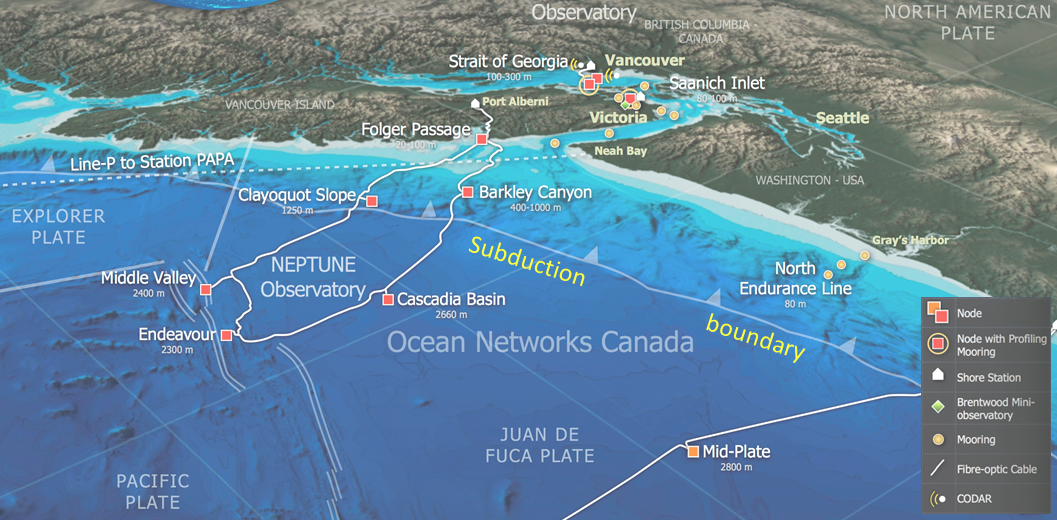Table of Contents
1-4 Volcanism
Read Chapter 4 in Physical Geology.
The relationship between volcanism and plate tectonics is described in Section 4.1 in your textbook and illustrated in Figure 4.1.1. Essentially five different tectonic settings exist in which volcanism can occur, including mantle plumes (also known as hot spots), divergent plate boundaries (also known as oceanic spreading ridges), continental rift zones, oceanic plate-continental plate convergent boundaries, and oceanic plate-oceanic plate convergent boundaries (both also known as subduction zones). In the first three of these settings, the magma originates from the decompression melting of mantle rock. In the subduction zone settings, the magma originates from the flux melting of mantle rock.
As described in the textbook, examples of mantle plume, rifting, and ocean-continent subduction related volcanism are all present in British Columbia. Offshore from Vancouver Island there is also an example of volcanism associated with a spreading ridge.
Complete Exercise 4.1 to help you understand how the partial melting of mantle rock leads to the formation of oceanic crust at a spreading ridge.
As explained in the previous chapter in your textbook and also in Section 4.2, when magma is stored in a magma chamber within the crust, a number of processes can lead to changes in its overall composition and also create zonation—more felsic at the top and more mafic at the bottom (see Figure 4.2.1).
The composition of the erupting magma plays an important role in the style of volcanic eruption that is produced. Although the main factor is magma viscosity—which is primarily controlled by the silica content—the amount of volatiles (gases such as H2O, CO2, SO2, etc.) is also very important, and, as illustrated in Figure 4.2.2, felsic magmas tend to have more volatiles than mafic magmas.
The pressure exerted by expanding gases as the magma moves towards the surface can make a volcano explode, and you can see how this works by doing Exercise 4.2.
Viscosity is important because while gases can escape (bubble out of) runny non-viscous mafic magmas, they cannot escape easily from viscous intermediate and felsic magmas.
Section 4.3 provides a summary of the main types of volcanoes or volcanic sources. Virtually all of the well-known “volcanoes” are either shield volcanoes or composite volcanoes, and it is important to understand their characteristics and tectonic origins. Cinder cones are small, and it’s not uncommon for them to form on the flanks of larger volcanoes (Figure 1-8).

Complete Exercise 4.3, which refers to subduction-related composite volcanoes along the west coast of North America.
Basaltic lava flows tend to create two distinctive textures at the surface, which are described using Hawaiian names. Pahoehoe, or ropy lava, forms when the magma is still very hot and quite runny, and the skin of hardened rock on the surface wrinkles as the flow continues underneath. Aa, or blocky lava, forms when the magma viscosity has increased (because of cooling), but the body is still being forced to move, often because it’s on a steep slope. Both of these textures are illustrated in Figure 4.3.12. See above to view a short video of a pahoehoe flow at Kilauea in 2007. Please excuse the colourful language!
Large igneous provinces are just that—large! The resulting flows cover thousands of square kilometres, and their eruptions are thought to have had major impacts on the Earth’s climate in the past, in some cases leading to major extinctions. As described in the textbook, these large igneous provinces are assumed to derive from mantle plumes “on steroids.”
As summarized in Section 4.4, volcanic eruptions present a variety of hazards, the magnitude of which depends very much on the type and size of the eruption. Some past eruptions have had devastating effects, leading to at least hundreds of thousands of deaths (possibly millions), and they are ranked amongst the deadliest of all natural disasters. The eruptions of the intermediate and felsic magma of composite volcanoes are the most serious direct hazards because they tend to be explosive (due to the high viscosity of the magma), because composite volcanoes are steeper and much less stable than shield volcanoes (so more prone to dramatic slope failure), and because the eruption cycles are typically centuries apart (allowing entire communities to forget about the hazards and settle on the fertile volcano flanks). On the other hand, some mafic lava flows have had devastating indirect effects. The 1783–1784 eruption at Laki, Iceland cooled the global climate significantly and, according to some estimates, resulted in millions of deaths worldwide, mostly due to famine.
In Section 4.4, read the descriptions of the risks associated with various types of eruptions, and then use Exercise 4.5 to help you understand what you have read.
Although volcanic eruptions have been deadly in historical times, huge advances have been made over the past couple of decades with respect to our ability to monitor volcanoes and predict eruptions, and so thousands of people do not need to be killed by pyroclastic flows, sector collapse, lahars, or ash falls. Modern methods for monitoring volcanoes are described in Section 4.5.
By completing Exercise 4.6, you can apply your knowledge to create a plan for monitoring the Canadian volcano that is most likely to put a large number of people at risk, should it erupt.
As described in Section 4.6, all of Canada’s known volcanoes are in British Columbia and the southernmost part of the Yukon. The most recent eruption in Canada was about 250 years ago at the Tseax Cone, north of Terrace, but seismic activity occurred in the area of the Nazko Cone in 2007, and that is assumed to have been related to subsurface magma movement. A sea-floor eruption occurred at Axial Seamount, off the west coast of Vancouver Island in 2015. Many of the other volcanoes in BC are capable of erupting again in the near future, but you now know how to monitor them if any signs of activity occur.
Please complete the questions at the end of Chapter 4.
This completes the notes for Unit 1.
Note for registered students: If you haven’t already done so, now is the time to start working on Assignment 1 (go to the “Assignments Overview” area of your course). Although you should find most of what you need to complete this assignment within these unit note and Chapters 1 to 4 of your textbook, you may also need to refer to other sources of information. If you do use other sources, be sure to document them in your assignment.


